NVIDIA Computex 2017 Press Conference Live Blog
by AnandTech Live Blog Staff on May 29, 2017 10:44 PM EST- Posted in
- Live Blog
- Trade Shows
- NVIDIA
- Computex 2017
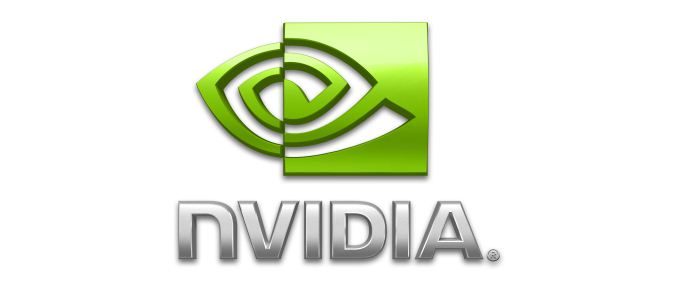
11:36PM EDT - First off, NVIDIA is demonstrating ways how to use AI. Basically, telling us that AI can be applied everywhere.
11:37PM EDT - In fact, it is hard to imagine an application that cannot be improved or re-invented with AI.
11:37PM EDT - Jen-Hsun Huang enters the scene.
11:39PM EDT - He is reckoning Moore's law and its scaling and says that it is getting harder to keep up with it in the modern world due to semiconductor physics.
11:40PM EDT - Also mentions that modern CPUs do not increase their ILP at a pace they used to in the past.
11:41PM EDT - Meanwhile, there are Deep Learning alghorithms that can take advantage of GPUs, which are parallel by their nature.
11:41PM EDT - (Ryan: So far this is nearly beat-for-beat Jen-Hsun's intro to GTC earlier this month)
11:44PM EDT - Jen-Hsen reminds that hardware is not everything - the company has to work with ISV to speed up performance of real-world applications.
11:45PM EDT - Shows how hardware and software evolved since Kepler and demonstrates how performance improved by 10 times.
11:46PM EDT - After 10 years of using the approach, NVIDIA sees that more developers are jumping on the bandwagon.
11:46PM EDT - Meanwhile, GPU remains at the core of everything.
11:48PM EDT - Now, the new challenge for GPU developers is virtual reality. Holodeck is the destination.
11:48PM EDT - Announcing NVIDIA Project Holodeck.
11:48PM EDT - And demonstrating how it works.
11:49PM EDT - The VR system involves combining multiple users into a single space, and then running a proper physics and high-quality(ish) graphic render on that space. NVIDIA's crew is using HTC Vive headsets, it sounds like.
11:50PM EDT - Demonstrating what the Holodeck can do.
11:52PM EDT - Now, the VR users are in a different location... Teleportation at work!
11:53PM EDT - From graphics standpoint, everything looks cool.
11:57PM EDT - Says bye to the VR crew.
11:58PM EDT - Recaps what the Holodeck is - a photorealistic world following the laws of physics. It will be available for preview in September.
11:58PM EDT - Now, gaming.
11:59PM EDT - Reminds that the vast majority of GeForce products are made in Taiwan. Think TSMC, ASUS, MSI, ZOTAC, etc.
12:00AM EDT - Reminds us of plans to bring monitors with G-Sync HDR to market this year.
12:01AM EDT - And now, gaming laptops. Jen-Hsen claims that various makers have sold 20 million gaming laptops with GeForce inside so far with 10 million sold in 2016.
12:03AM EDT - There are multiple reasons why gaming notebooks are getting more popular: PC gaming is a growing segment in general esepecially in developing countries, games are getting more photorealistic and there is the e-sports factor.
12:03AM EDT - Gaming notebooks can deliver performance on par with desktops, but at the cost of portability and mobility. Time to make them thinner and lighter.
12:04AM EDT - The key enabler for thin and light high-performance notebooks is NVIDIA's GeForce GTX Max-Q design.
12:05AM EDT - So, the upcoming gaming laptops will be 18 mm thick and will weight just about five pounds.
12:05AM EDT - Shows one of such machines.
12:05AM EDT - And the sleek system has a GeForce GTX 1080 inside.
12:07AM EDT - Now he is demonstrating a new ASUS ROG laptop that is 60% more powerful than the PS4 Pro.
12:10AM EDT - The game they were demonstrating is the upcoming Project Cars 2.
12:11AM EDT - The game uses a demanding rendering engine and also simulates behaviour of the racetrack, putting even more load on the GPU.
12:12AM EDT - So, what is Max-Q? A way to maximize performance of a GPU at the most efficient power setting.
12:13AM EDT - They tune GPUs for particular laptop designs, they use advanced thermal solutions and use an advanced VRM.
12:14AM EDT - So, back to AI.
12:15AM EDT - One of the ways to use AI is to teach computers to program themselves, says Jen-Hsun.
12:16AM EDT - Reminds how NVIDIA's Drive platform learns how to drive.
12:20AM EDT - Now he is talking performance consumption of modern AI computers.
12:21AM EDT - So, NVIDIA is developing solutions to satisfy enormous performance demands of AI.
12:23AM EDT - NVIDIA is working with multiple software and service providers to make its platform accessible to developers.
12:24AM EDT - The core of the strategy is GPU. Now, he is recapping the Volta architecture and the Tesla V100.
12:26AM EDT - Reminds us of Tensor operations as well as of the Tensor cores.
12:28AM EDT - Actually, for a deeper dive into the V100 and the Tensor operations/cores, it makes sense to check out Ryan's V100 coverage.
12:31AM EDT - Meanwhile, Jen-Hsen is showing the new VGX server with eight Tesla V100s.
12:31AM EDT - And shows the V100 chip, which cost $3 billion to develop.
12:35AM EDT - Now, NVIDIA is disclosing that the V100 and the software stack have been adopted by Foxconn, Inventec, Quanta and Wistron, four large contract makers of servers.
12:36AM EDT - Shows off NVIDIA deep learining software stack in a simplified form.
12:42AM EDT - To make deep learning acessible to a wide range of developers, NVIDIA put the whole stack into its GPU Cloud, which will be available in July.
12:42AM EDT - Time to talk about robots.
12:43AM EDT - Robots are the culmination of AI: they have to sense the word, learn it, plan their actions and then act.
12:45AM EDT - Autonomous vehicles are also robots.
12:46AM EDT - Now demonstrating NVIDIA's self-driving vehicle.
12:48AM EDT - NVIDIA is working with taxi, transfer, trcuck companies, etc. to advance its autonomous vehicle platform.
12:53AM EDT - Announcing the Isaac Initiative - a robotics platform. The platform uses Jetson TX2 hardware, Astro AV stack, Isaac Lab simulation environment (in virtual reaility) as well as reference platforms.)
12:55AM EDT - Showing one of the first robots developed under the new initiative.
12:57AM EDT - Apparently, that flying thing was not developed using the Isaac robot simulator.
12:58AM EDT - So, the Isaac enables developers to train robots in VR, so, withouyt producing them.
01:00AM EDT - This is how multiple Isaacs are learning..
01:01AM EDT - It is possible to train robots in different environments.
01:03AM EDT - There are multiple reference platforms based on the Jetson - each robot has a different set of sensors and is aimed at different application.
01:04AM EDT - Now, he is recapping what was just said.
01:07AM EDT - Time to wrap up, see you at another press conference.



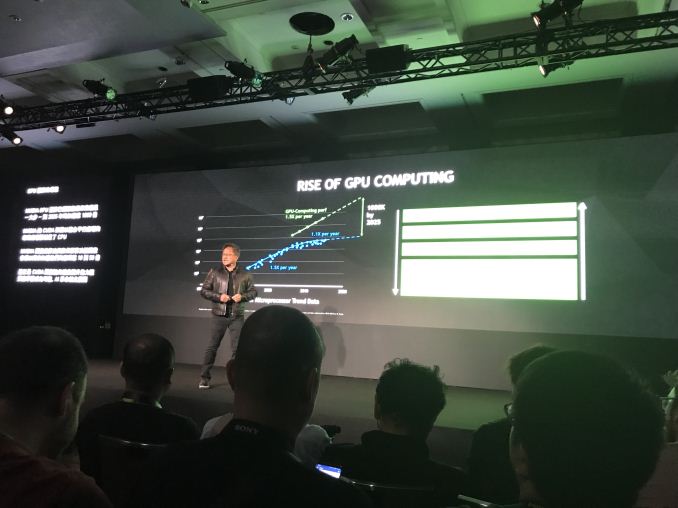
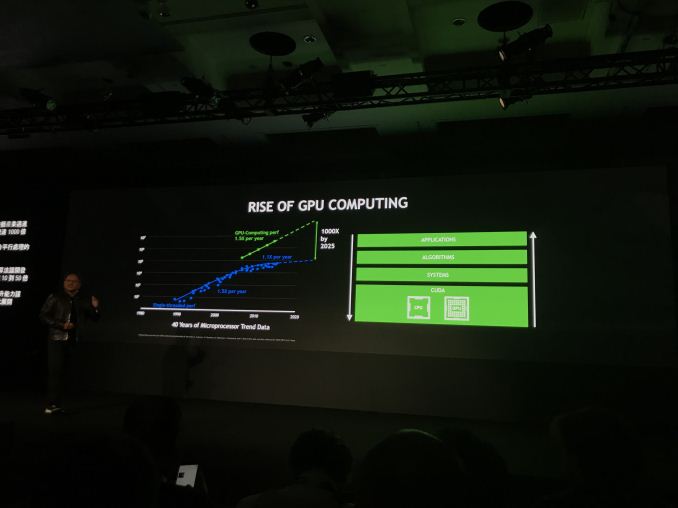
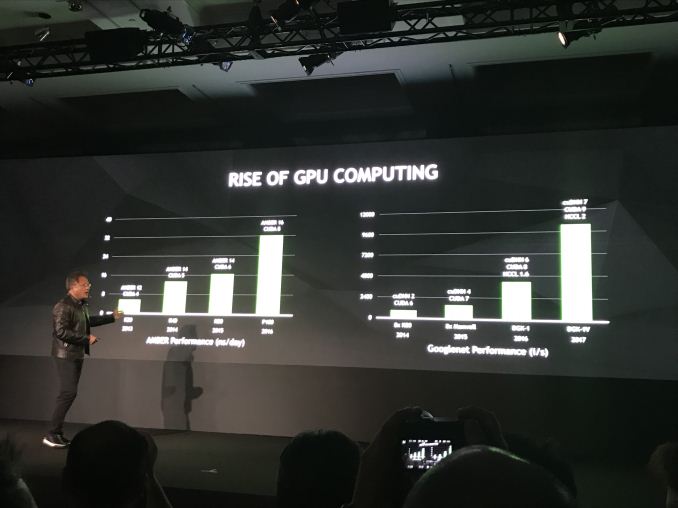
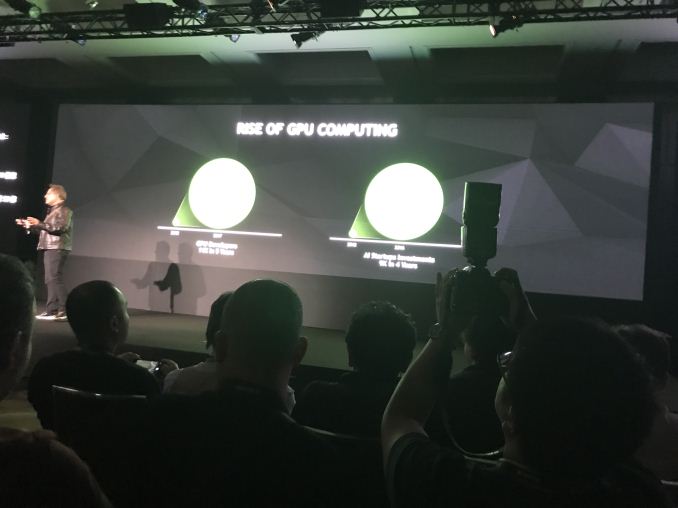
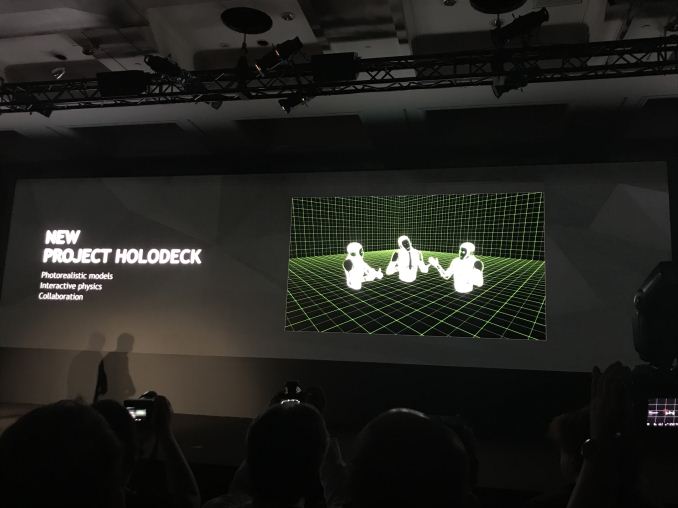
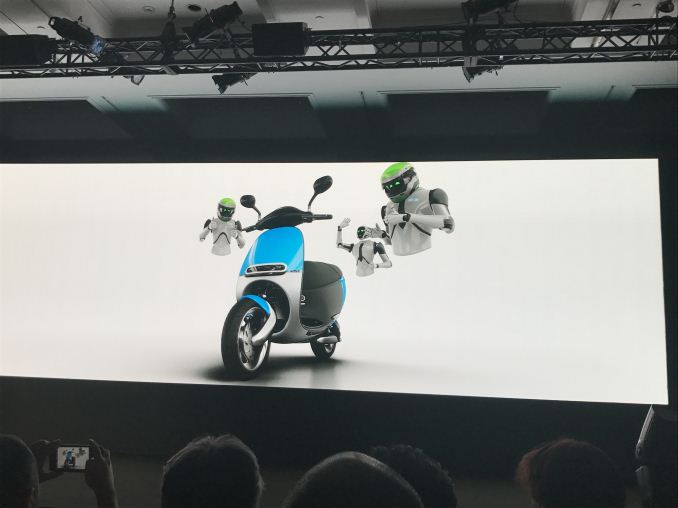
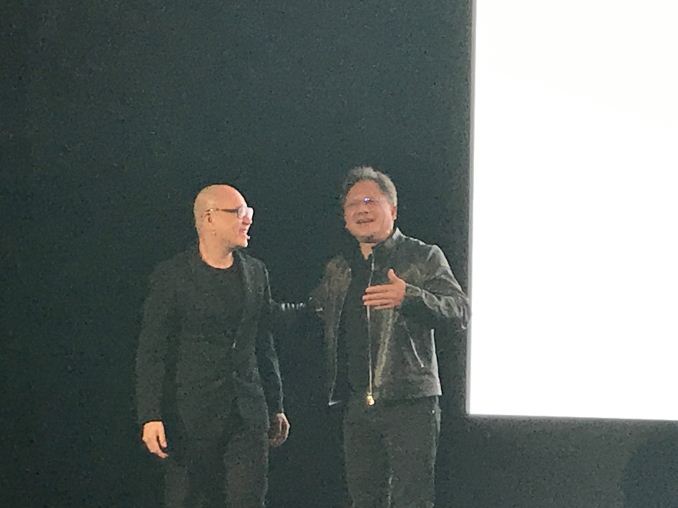
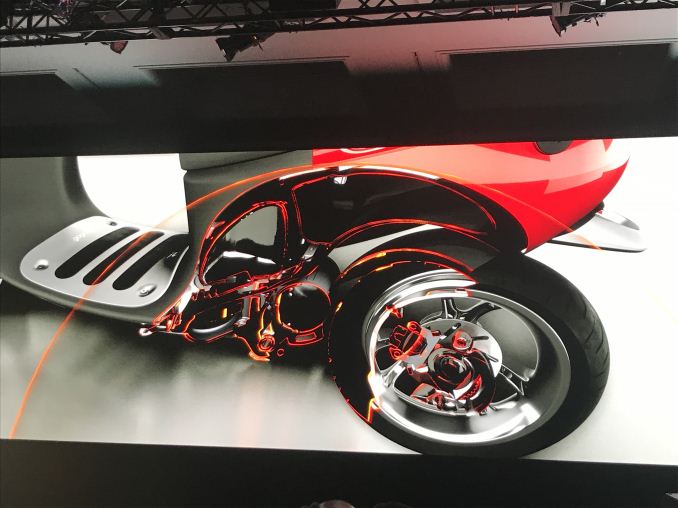
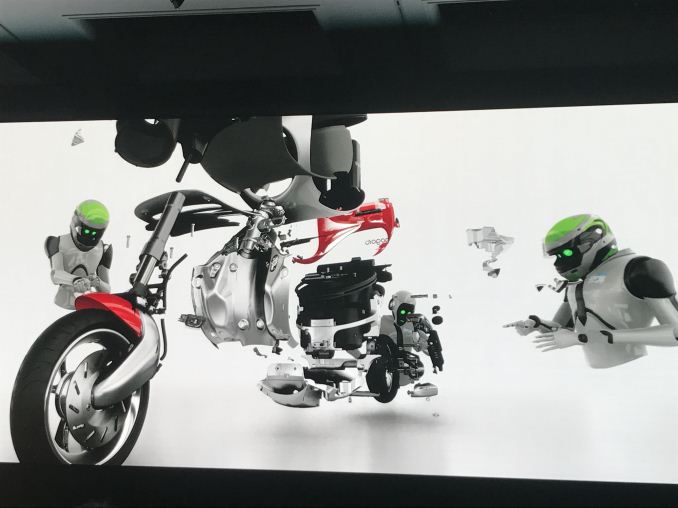
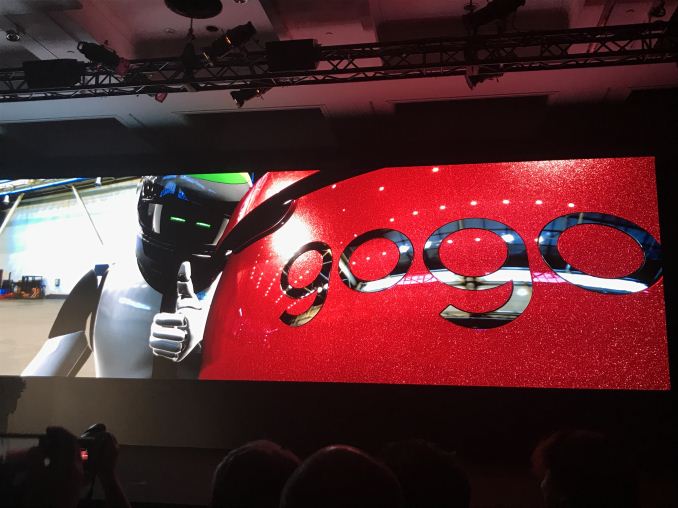
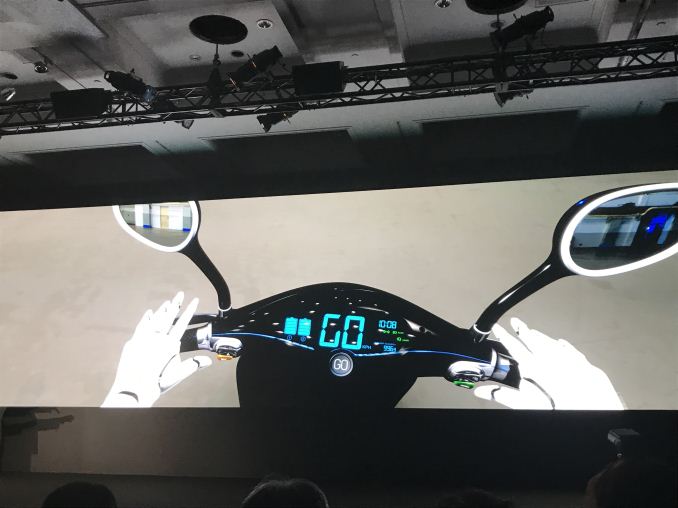
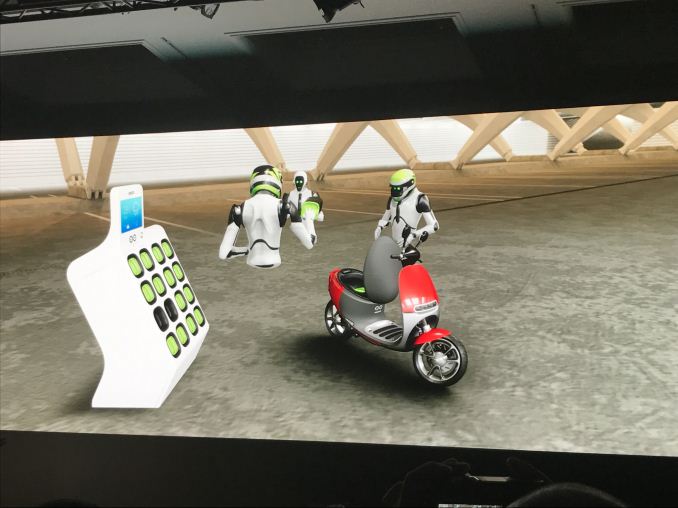
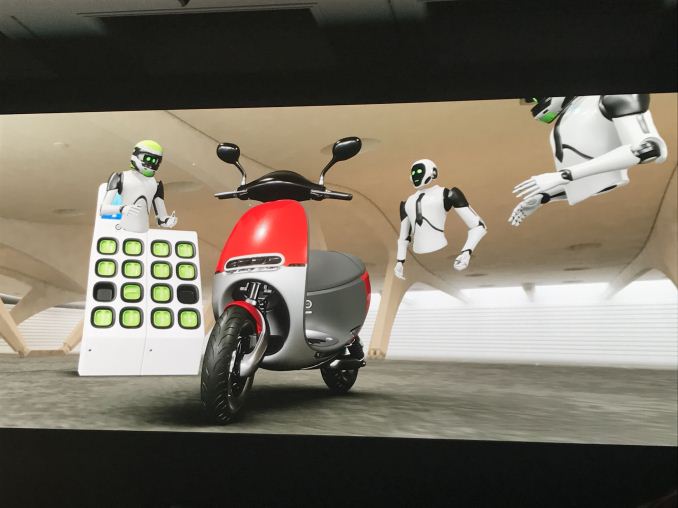
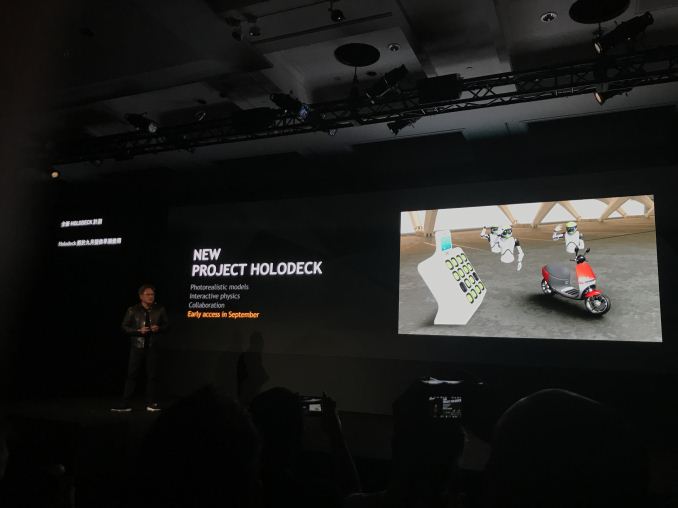
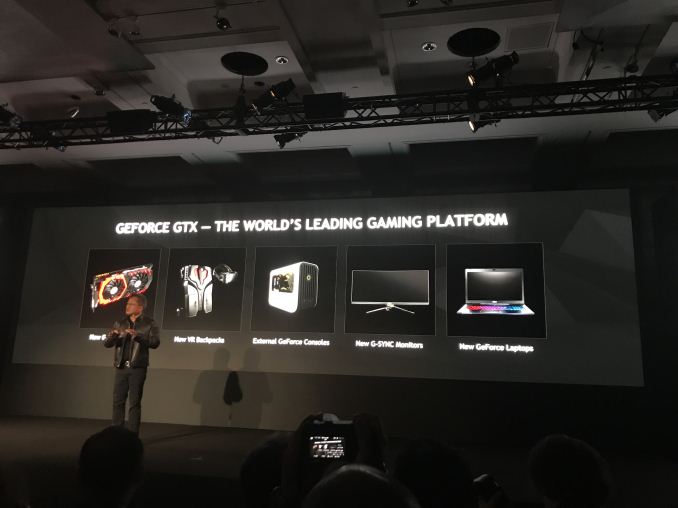
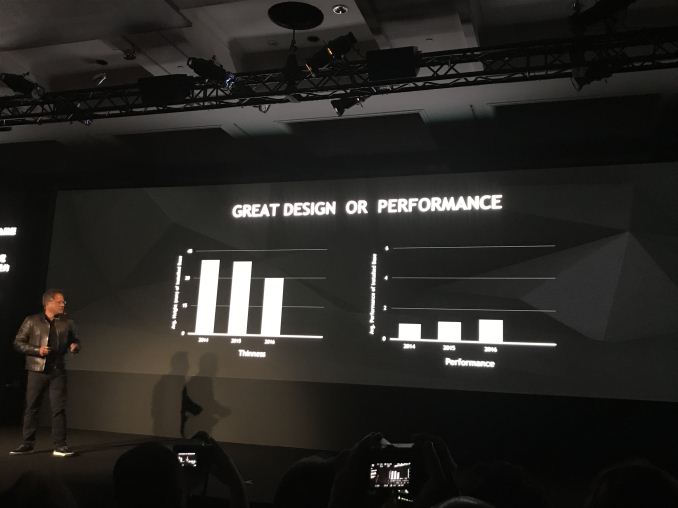
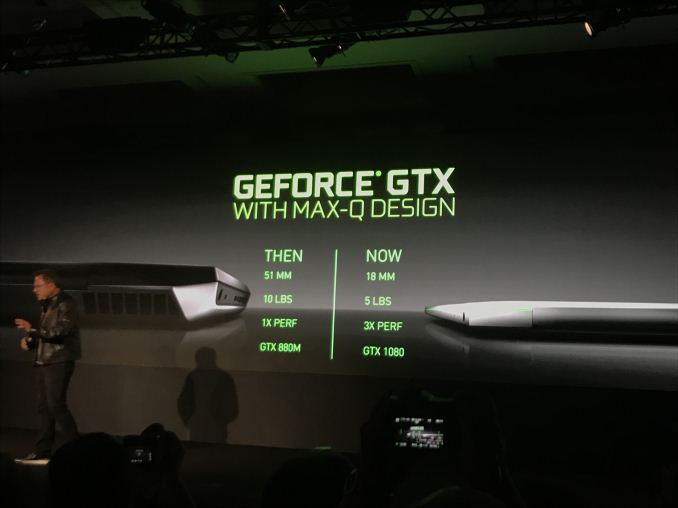
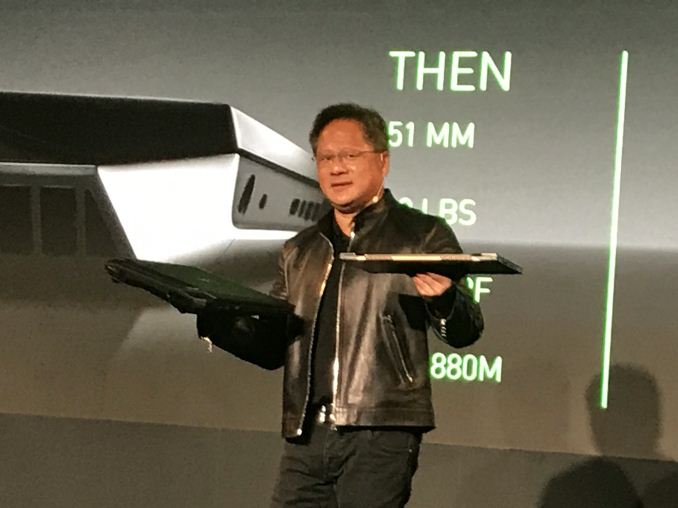
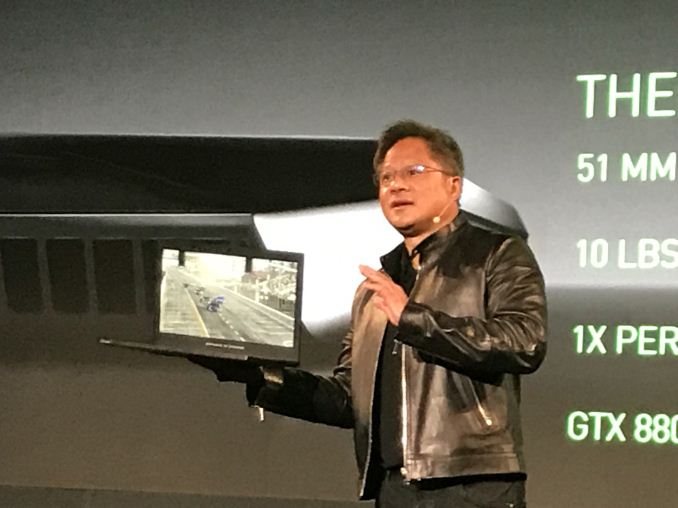
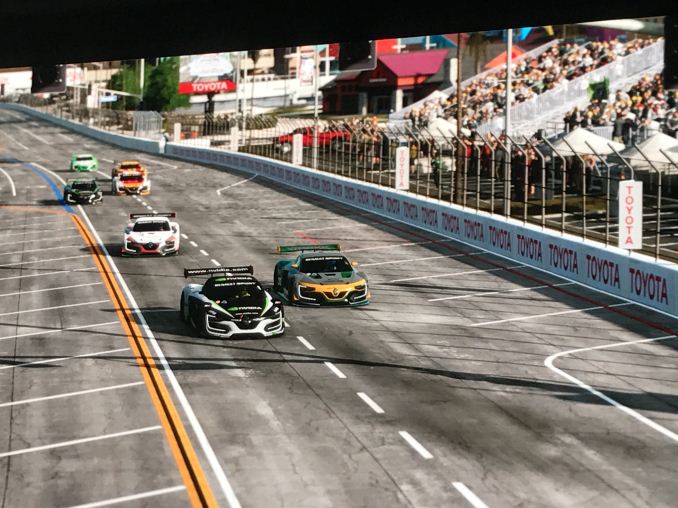
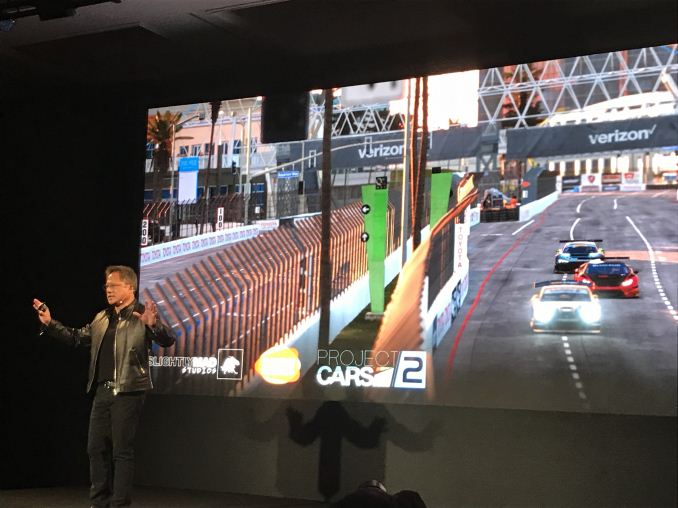

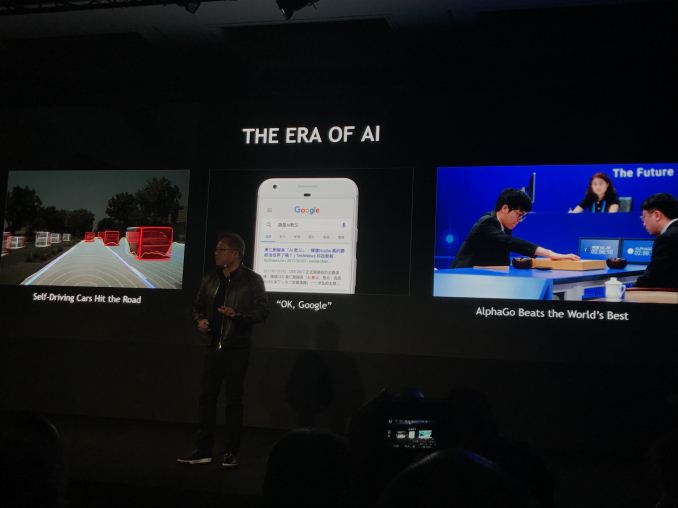
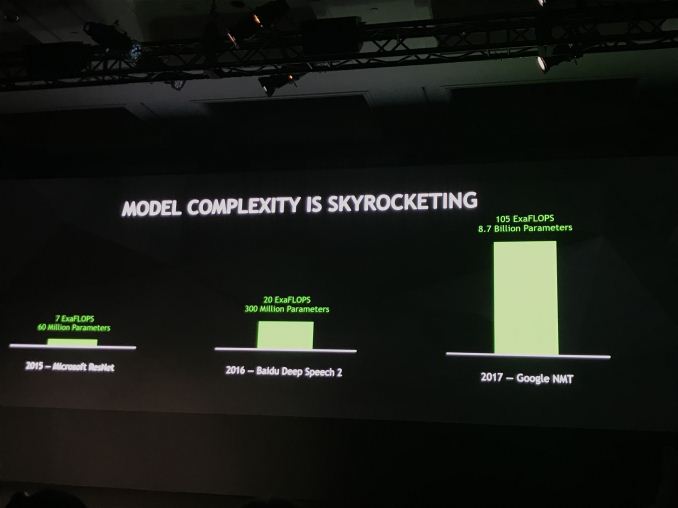
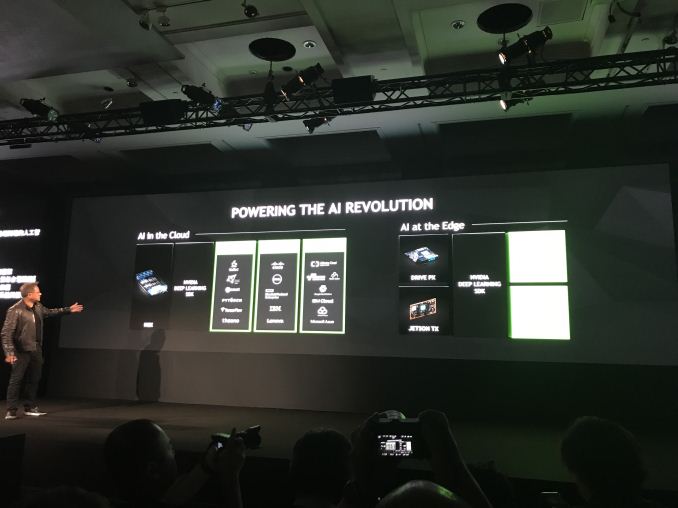
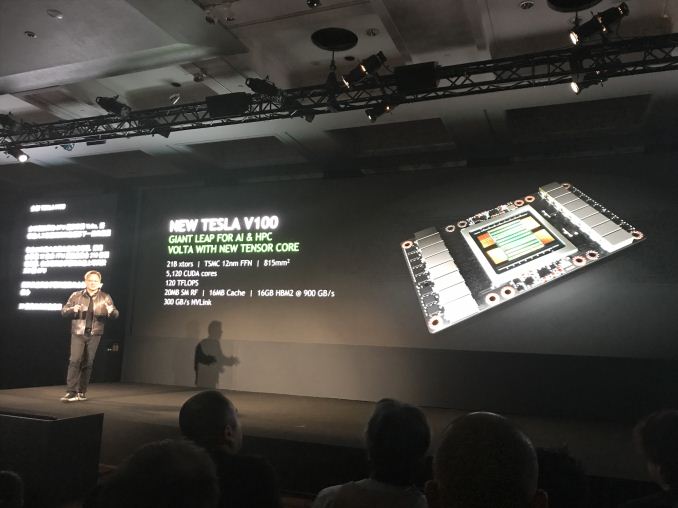
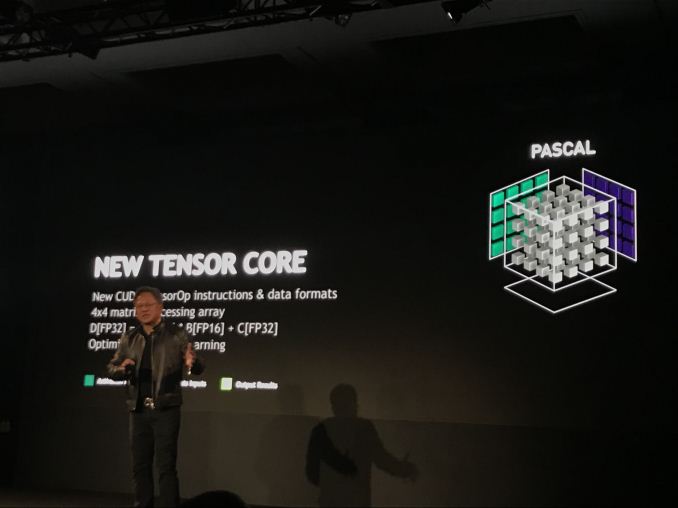


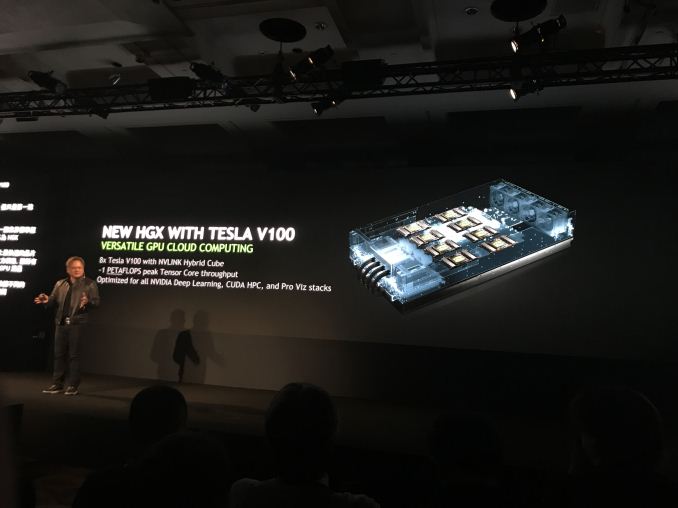
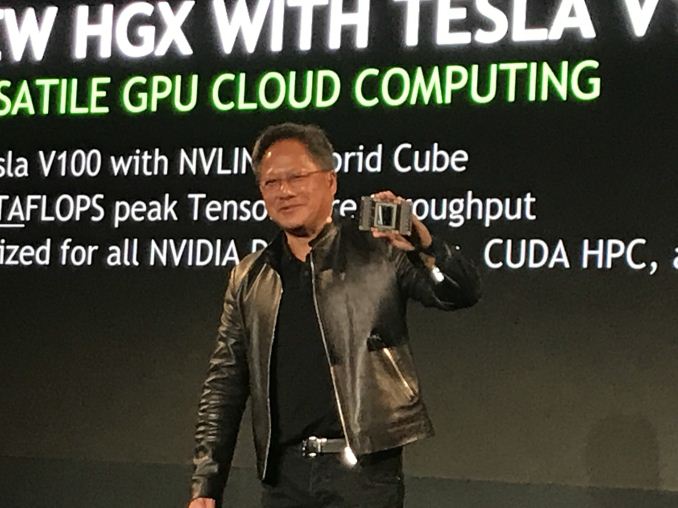
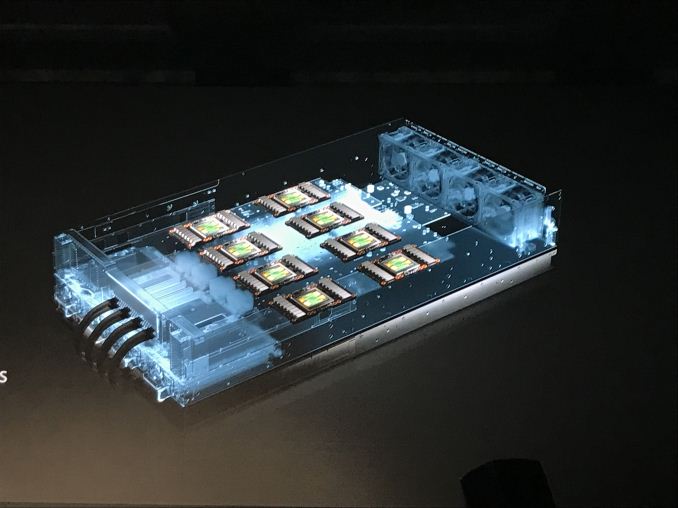


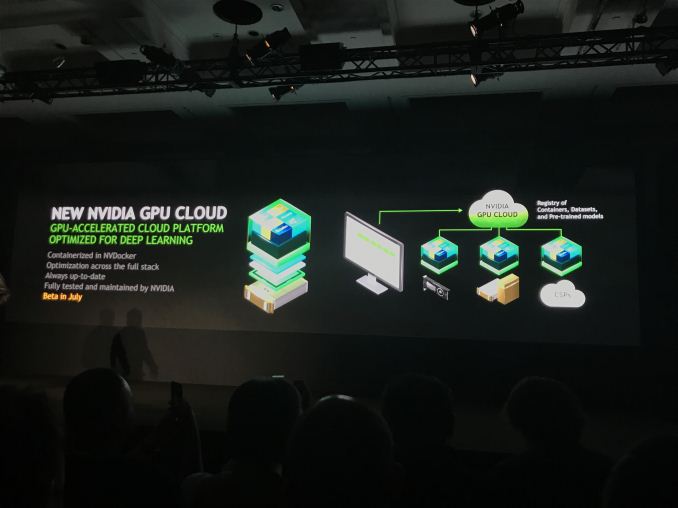
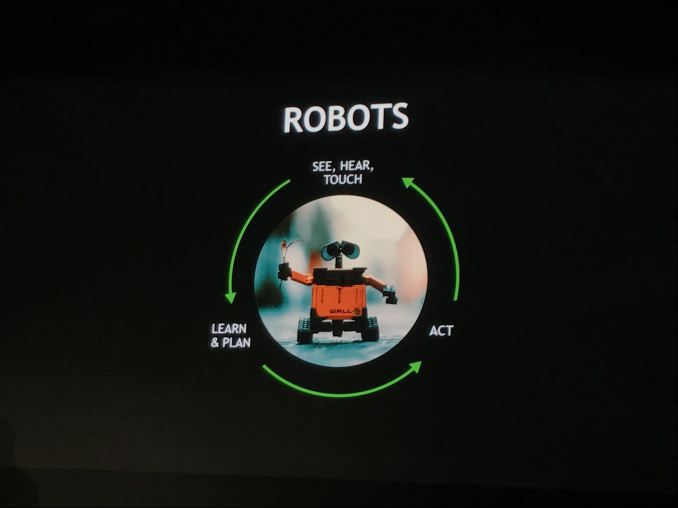
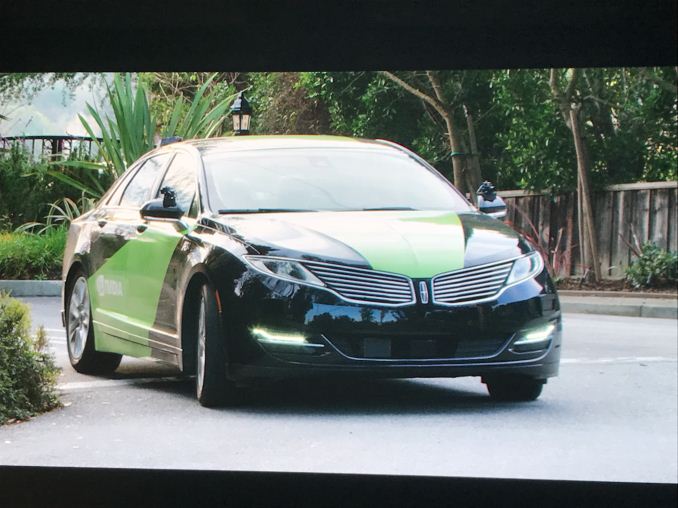
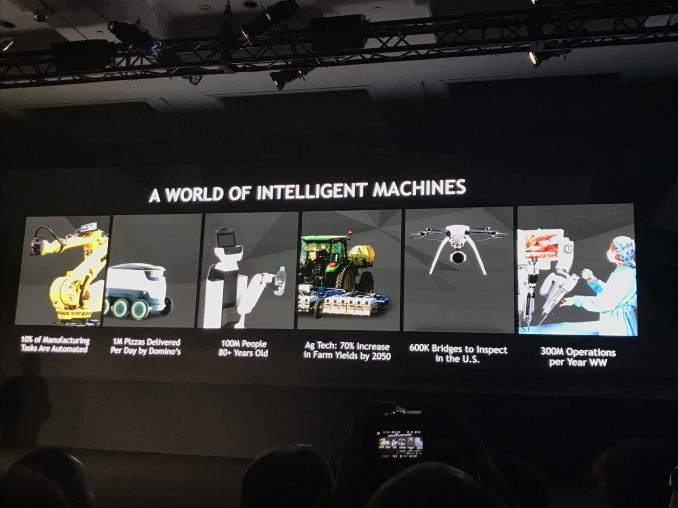
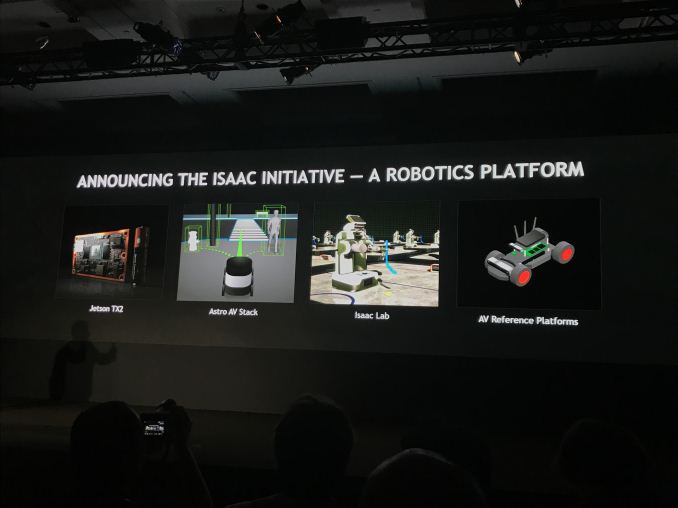
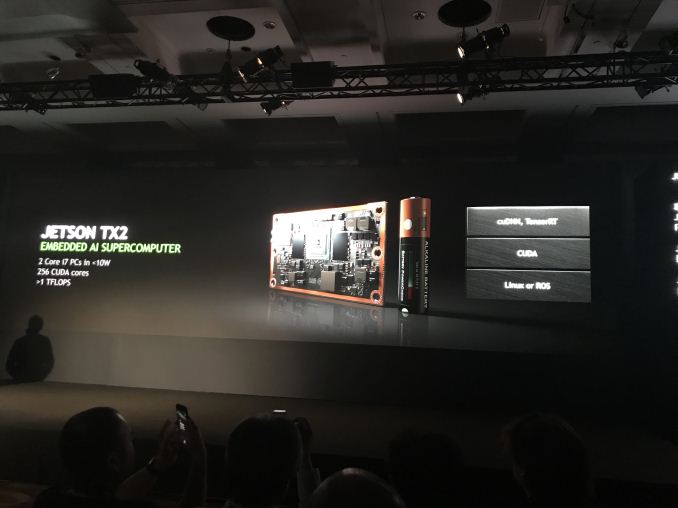


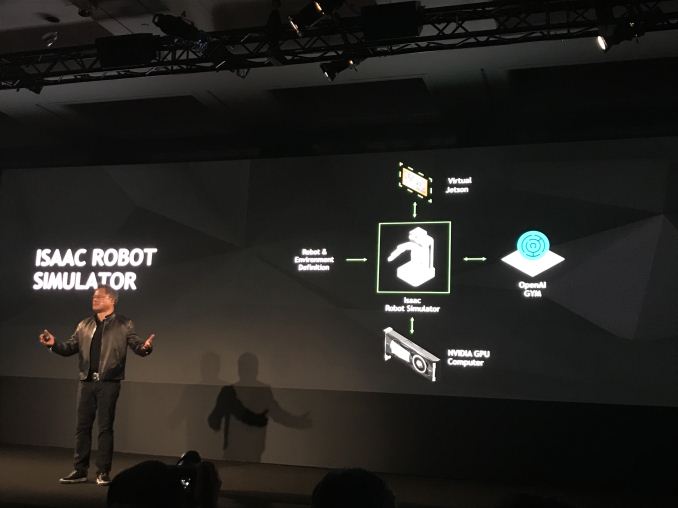
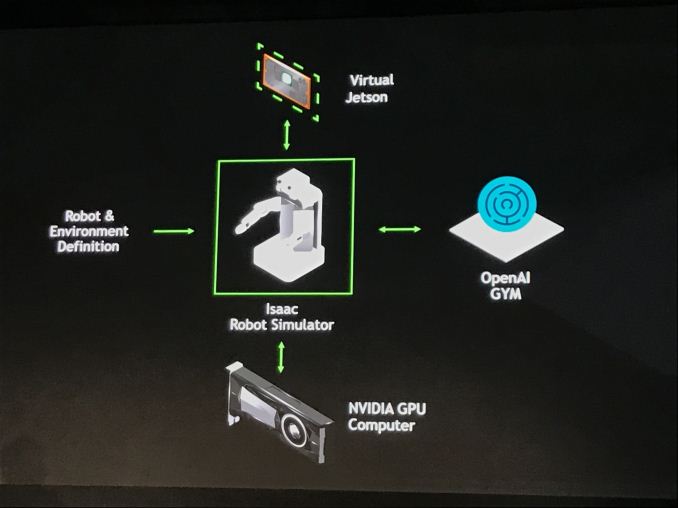
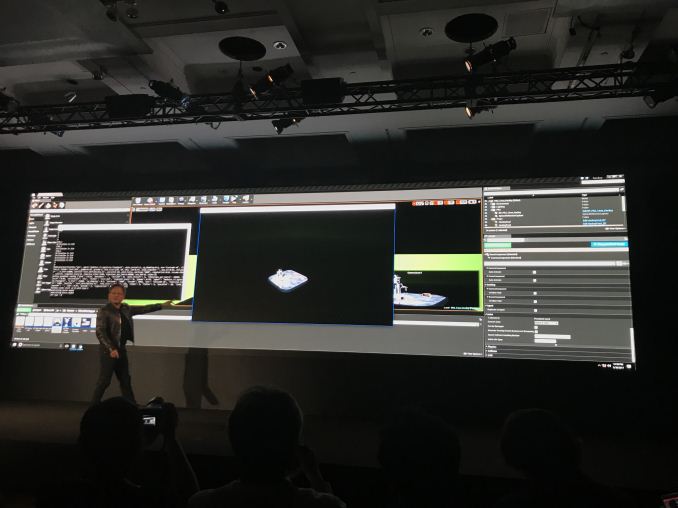
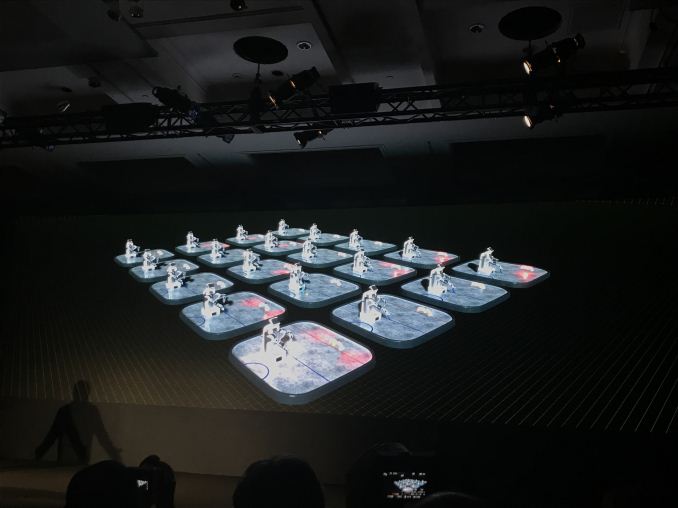
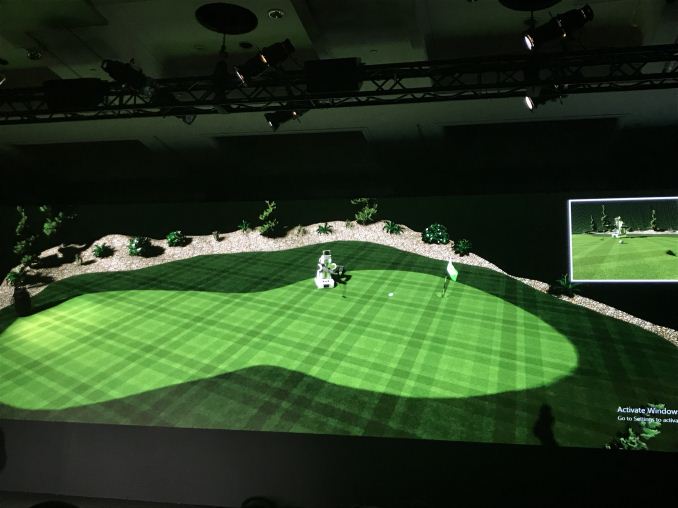
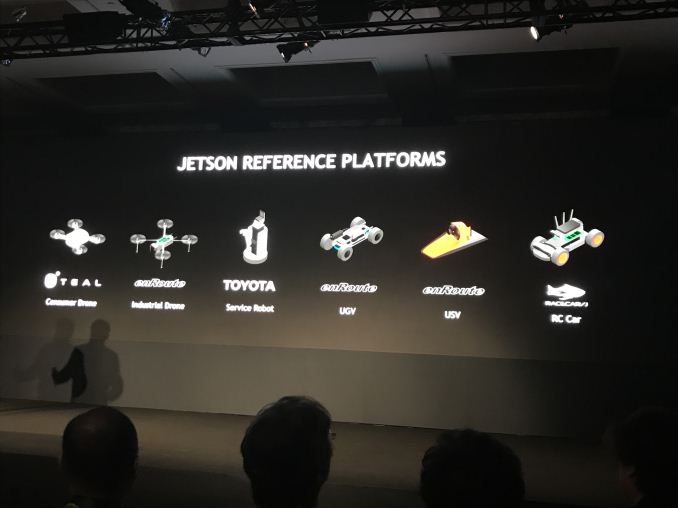
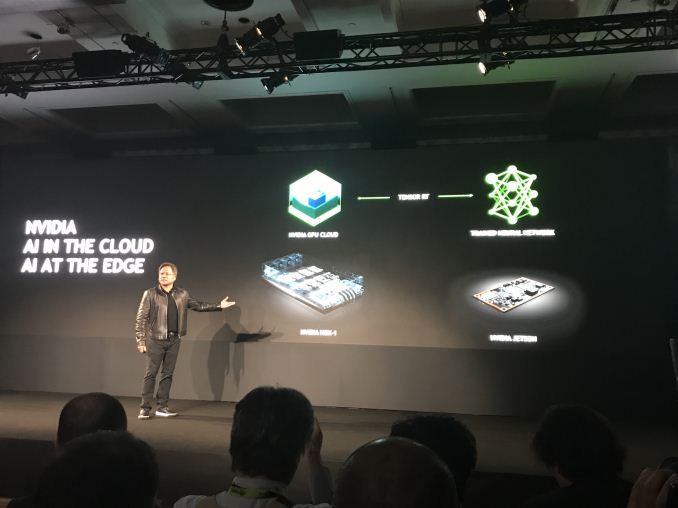
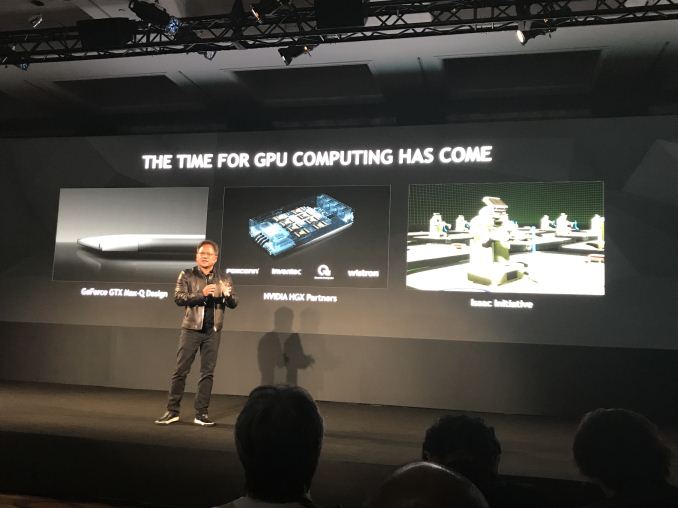








10 Comments
View All Comments
Buk Lau - Tuesday, May 30, 2017 - link
I'll be very surprised if nvidia still has new things to release at computex, and rebranded/cut-down gpus don't count.Motion2082 - Tuesday, May 30, 2017 - link
It's all well and good to slim down gaming laptops BUT as we'll know...the main issues with gaming laptops are HEAT, TEMPS and THERMALS. I wouldn't want to waste another $3k on a gaming laptop that gets too hot and dies after 1-2 years of solid use.Hrobertgar - Tuesday, May 30, 2017 - link
Weight may not be the top issue, but it is till a big issue. Just walk thru an airport with one (or two laptops if you are traveling for work) on your shoulder. The laptop, its powerpack, and all the peripherals can be over 8 lbs per machine. That can get tiring on your shoulder after a while. Your gaming laptop plus a work laptop at the same time can be downright unpleasant. Saving a pound or two off that is welcome!Hrobertgar - Tuesday, May 30, 2017 - link
Furthermore, a lot of gaming laptop weight is gratuitous - the battery. Ultrabooks have fooled computer designers into thinking battery life is everything. I am NOT going to GAME on the stupid battery. I do NOT need a massive 95Wh battery, but it came without any other options on my 18 month old Alienware - that is like an extra half pound or more that I don't want and will never use. Although I thought I saw they do now offer options for smaller batteries.Just travel more often with your gaming laptop and you will appreciate that weight does matter.
0ldman79 - Monday, June 5, 2017 - link
Inspiron 7559, adequate speed, weight and battery life.Core i5 and 960M. The beast gaming laptops do have a finite lifespan.
PureWaterGuy - Thursday, June 1, 2017 - link
Don't you think the AI and deep learning are new? I think both of these topics will be huge for Nvidia.stuli1989 - Tuesday, May 30, 2017 - link
Any details on when the first MaxQ notebooks will launch?vailr - Thursday, June 1, 2017 - link
What about driver-less Indycars? That is: a fully robotic racing car at an event like the Indy 500. Piloted only by AI nVidia controllers. That would be interesting, especially if they had a 33 car fleet of driver-less race cars competing over a 500 mile race course.Bestgaminglaptop - Thursday, September 21, 2017 - link
Great post ad if you want to reviews of any gaming laptop so you can visit my sitehttp://laptopunder.net/ because we deliver the reviews of the best gaming laptop.
GoogleCustomerSupport - Friday, December 22, 2017 - link
Great Post!Robotics are very smarter technology in present day. This is Google customer support, if you have any queries then visit our home page: <a href="https://www.bizjournals.com/pittsburgh/prnewswire/... Google Customer Support </a>